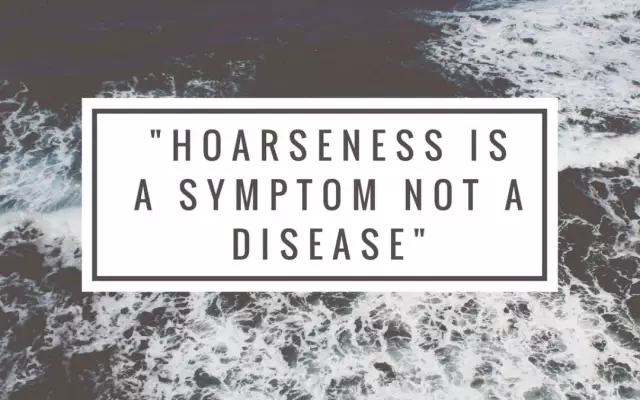- Author Rachel Wainwright [email protected].
- Public 2023-12-15 07:39.
- Last modified 2025-11-02 20:14.
Chlamydia
General information about the disease

Chlamydial infections are a whole group of diseases that occur not only in humans, but also in animals. They are united by similar symptoms and mechanisms of development. In addition, any chlamydia infection is caused by the same pathogen - the Chlamydia bacteria. They are widespread in nature, and new types of these microorganisms are regularly identified. In addition to humans, chlamydia affects birds, animals, arthropods, molluscs, fish and even plants. However, we are primarily interested in chlamydia in women and men. We will talk about it in this article.
Most often, the causative agents of chlamydia affect the genitourinary system. In the United States, chlamydia is found in 5-10% of the population aged 15 to 30, that is, in people who are sexually active. For our country, detailed statistics are not available, but it can be assumed that the incidence rate is no lower than in the States.
Ways of infection with chlamydia
Typically, chlamydia bacteria enter the body of a healthy person through sexual contact with a sick partner. You can get infected both with traditional and anal sex. Cases of infection with oral sex are extremely rare. Note also that the diagnosis of chlamydia is often made in newborns. Treatment of babies is required after passing through the birth canal of the mother, where chlamydia awaits them.
The household route of infection with chlamydia is unlikely, since bacteria quickly die outside the human body. In addition, to activate the infection, a certain number of pathogens is needed, which is not enough when using common household items and hygiene items. However, you should still take elementary care in public toilets, swimming pools, baths and other places where chlamydia accumulates.
Chlamydia symptoms
The incubation period for the manifestation of chlamydia symptoms in women and men ranges from 7 to 30 days. Usually, the first symptoms of chlamydia appear a couple of weeks after infection. Consider only that in 5% of cases, chlamydia is asymptomatic, therefore, after accidental intercourse without using condoms, it is advisable to immediately undergo a medical examination, and even better - to refuse sex with unverified partners altogether.
When chlamydia is diagnosed, symptoms in women indicate damage to the genitourinary system. Patients complain about:
- clear or white-yellow vaginal discharge;
- soreness when urinating;
- redness of the skin and rather severe itching in the perineum;
- pain in the lower abdomen and in the lumbar region.
Chlamydia in men shows similar symptoms. Note also that during infection, both representatives of the strong half of humanity and lovely ladies feel a burning sensation during intercourse.
Consequences and complications of chlamydia
In addition to the genitals and urinary system, chlamydia affects other organs and systems: the respiratory tract, eyes, nervous system, liver, lymph nodes, biliary tract, joints and the cardiovascular system. As for the consequences, it is enough to say that when chlamydia is diagnosed, treatment is often complicated by the development of inflammatory processes in the uterus and appendages, Reiter's syndrome, lesions of the eyes and joints. Previously, it was believed that infectious agents cause prostatitis, but now the connection between this phenomenon and chlamydia in men is being questioned.
Chlamydia diagnosis

In order to identify chlamydia in women and men, modern high-precision research methods are used, in particular, the PRC, the efficiency of which reaches 90-95%. Relatively recently, to confirm the presence of chlamydia, studies of a general smear were used, but at present this technique is no longer relevant, since it only allows suspecting chlamydia, and therefore is fraught with medical errors. ELISA, PIF and detection of antibodies to chlamydia are also not very popular due to the low accuracy of the results and the inability to separate the transferred and current infection from each other.
Chlamydia treatment
With an uncomplicated clinical course, the course of treatment for chlamydia includes taking azithromycin or doxycycline. Azithromycin has many other (commercial) names: azitrox, azivok, sumizide, zitrolide, chemomycin and sumamed. It should be borne in mind that when diagnosed with chlamydia, symptoms may only be present in one of the partners. This fact does not at all mean that the second partner is healthy, because the infection can be absolutely asymptomatic. For this reason, during the period of treatment and 2-3 weeks after the end of the course, the sick person must refrain from sexual intercourse. In addition, it is highly desirable to combine the intake of antibiotics with nonspecific agents and physiotherapy procedures to strengthen the immune system and prevent relapses. A person is considered healthy if the research carried out as in the course of treatment,and 1-2 months after its end, confirm the absence of chlamydia.
With timely, adequate treatment of chlamydia in women and men, the prognosis is favorable, but in some cases modern medicine is experiencing certain difficulties. It is known, for example, that improper use of antibacterial drugs can lead to the development of chlamydia into a chronic stage, which will be much more difficult to get rid of. The chronic form provokes serious complications and causes a sharp exacerbation of existing inflammatory processes, therefore, you should contact only experienced doctors and immediately abandon the idea of curing chlamydia on your own.
YouTube video related to the article:
The information is generalized and provided for informational purposes only. At the first sign of illness, see your doctor. Self-medication is hazardous to health!






